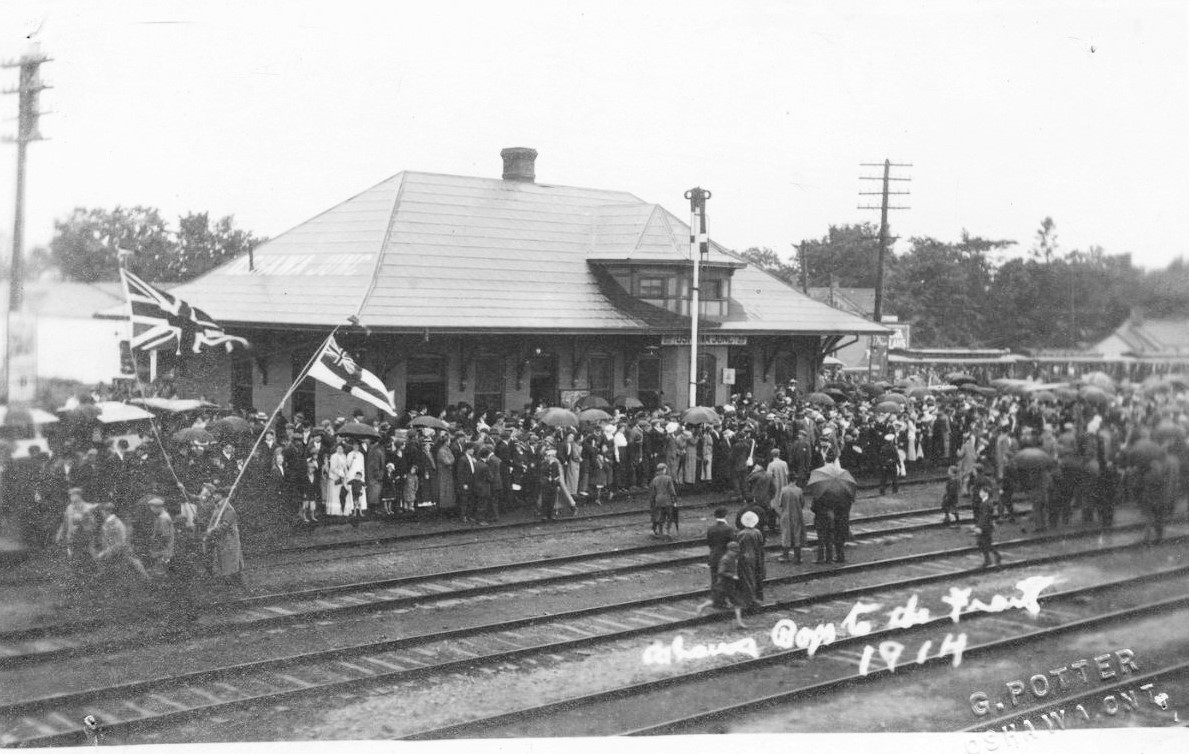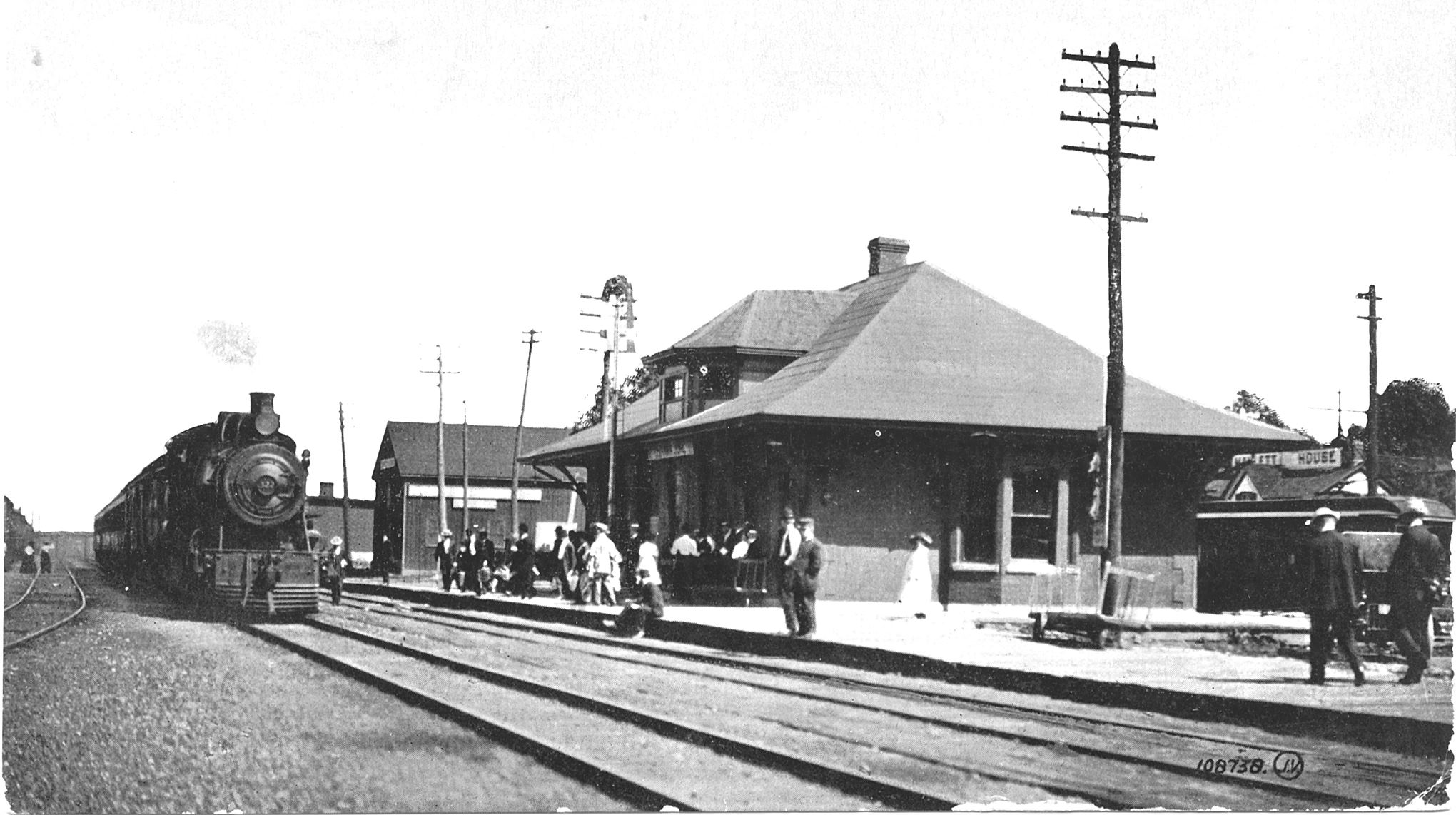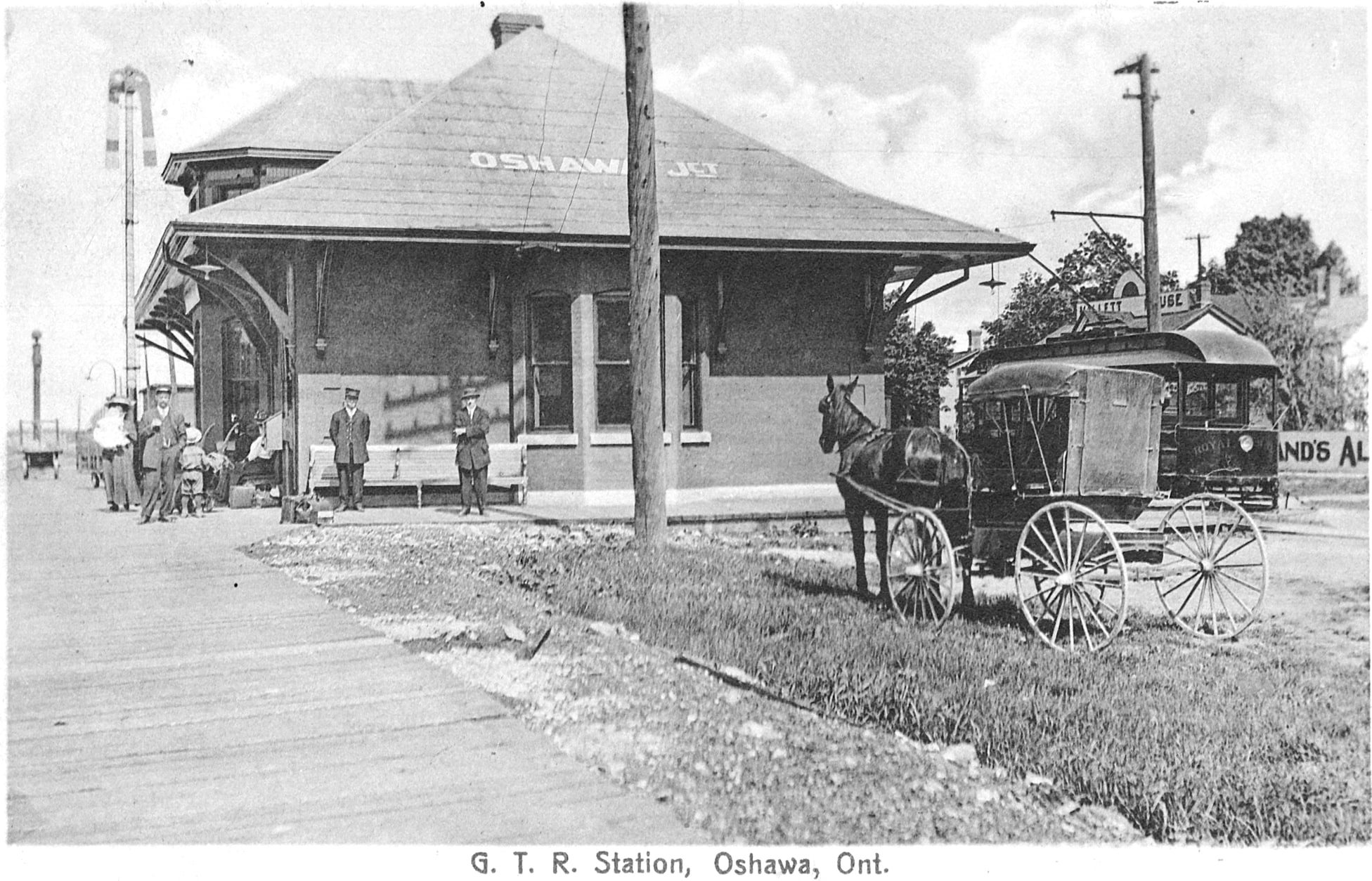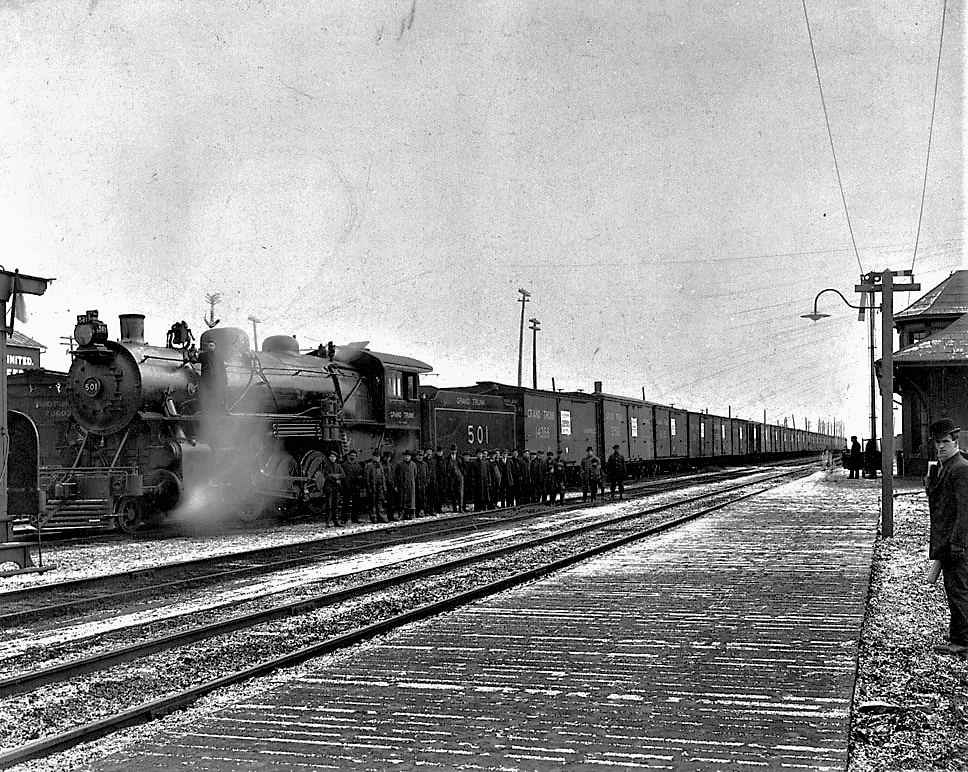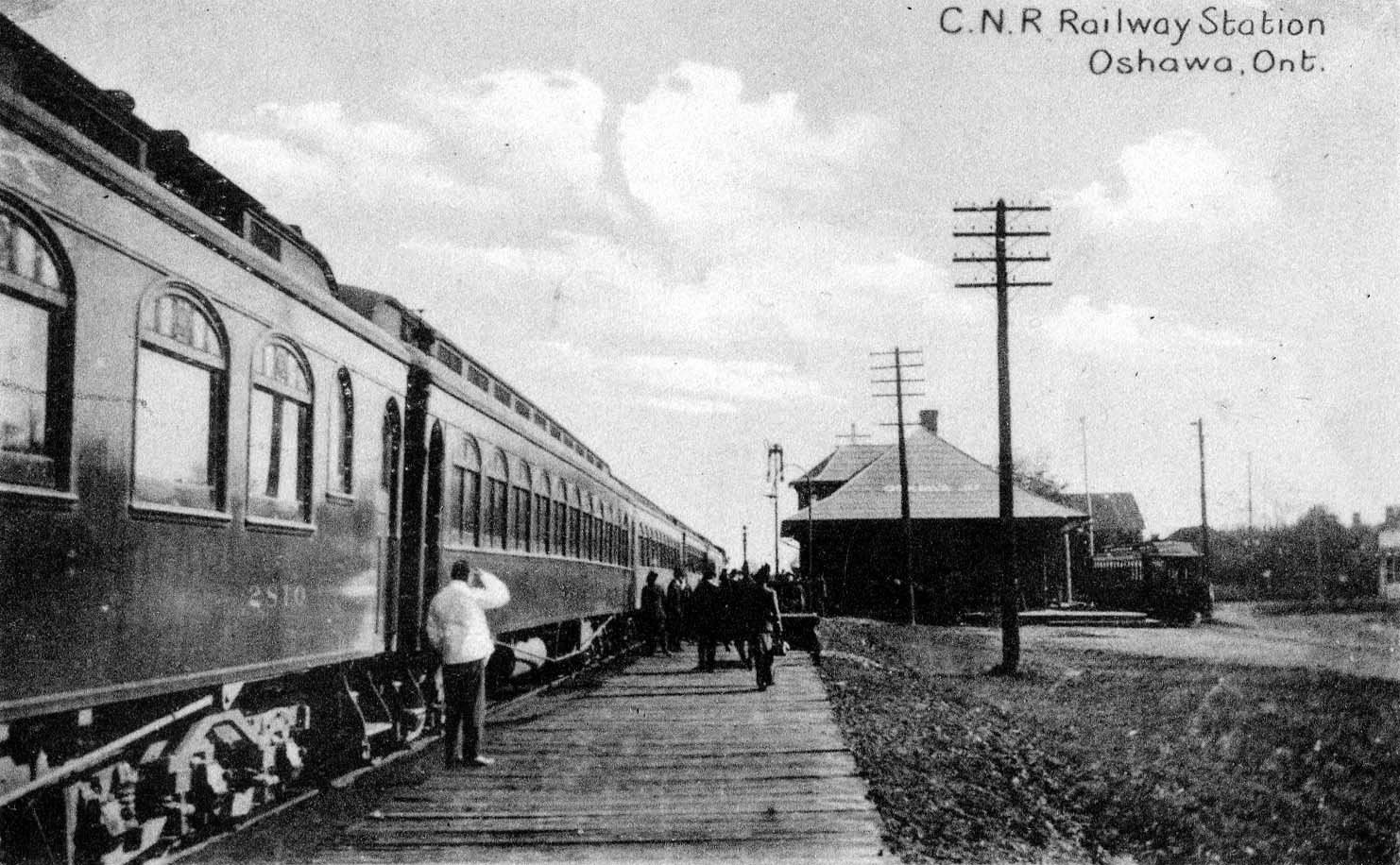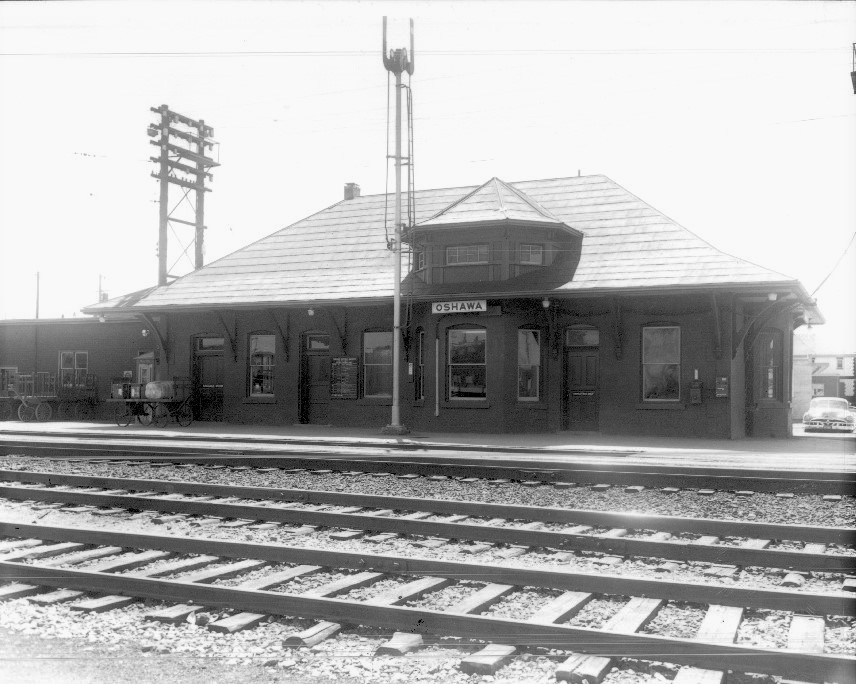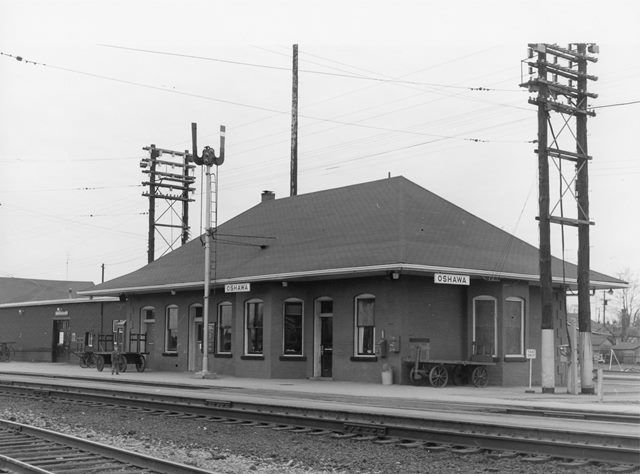Summary
Oshawa Station was built by the Grand Trunk Railway in 1856 while its construction was underway between Toronto and Montreal. It was located on the east side of Simcoe Street and on the south side of the tracks, close to the modern-day intersection of Albert and Annis Street. While no photos of this station are known to exist, it would have been a rectangular structure with grey limestone exterior walls. These would have had up to six French doors on the front and back walls and two on the side walls. Up to four chimneys would have protruded from the building’s pitched roof, each connected to a woodstove or fireplace to provide warmth for passengers during cold winters. Surviving examples can still be found today in Port Hope, Napanee and Ernestown, albeit with some later modifications. The first train from Toronto arrived in Oshawa on August 25th, 1856, but through service between Toronto and Montreal would not officially commence until October 27th of the same year. By the time of Canada’s confederation in 1867, a total of six trains were stopping at Oshawa Station on a daily basis.
Although this was the only railway station in Oshawa at the time, it was inconveniently located about 2.2 kilometres south of Oshawa’s main intersection. In 1895, an electric street railway known as the Oshawa Railway was opened between the Grand Trunk station and the middle of Oshawa, providing faster travel for both passengers and freight. At around the same time, Oshawa Station was enlarged laterally to one side. It’s unknown exactly what this would have looked like but contemporary accounts claim it would have appeared similar to the Grand Trunk station in Cornwall after it was also expanded. In 1903, the Grand Trunk had its mainline double tracked through Oshawa to allow for a higher volume of trains. Oshawa Station was replaced altogether at about the same time this work was done. The new station building was a rectangular structure with hexagonal bay windows on its north and west walls. Perhaps its most striking feature was a dormer just above the operator’s bay, protruding from the station’s bellcast hip roof. The station was now denoted as Oshawa Junction on signage and timetables, likely in reference to the connection with the Oshawa Railway nearby.
The Grand Trunk encountered financial difficulties through the early 20th century, culminating in its nationalization and subsequent absorption into the newly-formed Canadian National Railway in 1923. Service to Oshawa Station had increased to eight trains per day by 1929, though this would soon decrease as a result of the Great Depression. Combined with the gradual popularization of automobiles, these economic effects would contribute to the end of passenger service on the Oshawa Railway in 1940. A brief rebound to fourteen trains per day would occur immediately following the war, but the resumption of automotive production and the construction of Highway 2A (later Highway 401) through the south end of Oshawa between 1947 and 1956 incentivized many to drive instead. The highway was built just a couple hundred metres north of the railway, physically separating it from where the majority of Oshawa’s residents lived. Canadian National replaced the station once more in 1967 with a more modern-looking structure, having a flat roof and large windows but otherwise lacking in architectural embellishments. Oshawa’s position as a suburban bedroom community of Toronto solidified a certain amount of train service even as passenger ridership fell, though it would decrease to nine trains per day by 1974. All remaining passenger service to Oshawa was assumed by VIA Rail in 1977.
When GO Transit was extended to Oshawa in 1990, it established its own station approximately 2.5 kilometres to the west at Thornton Road. VIA subsequently abandoned its station at Simcoe Street and moved to the new GO Station. The GO station was upgraded with a new building in 2017.
Condensed Station Info:
| Location: | Served By: | Current State: | Date Built: | Date Demolished: |
| North end of Albert Street | Grand Trunk (1856 – 1923) Canadian National (1923 – 1977) VIA Rail (1977-1990) | Demolished | 1856 (First) 1903 (Second) 1967 (Third) | 1903 (First) 1967 (Second) 1990 (Third) |


